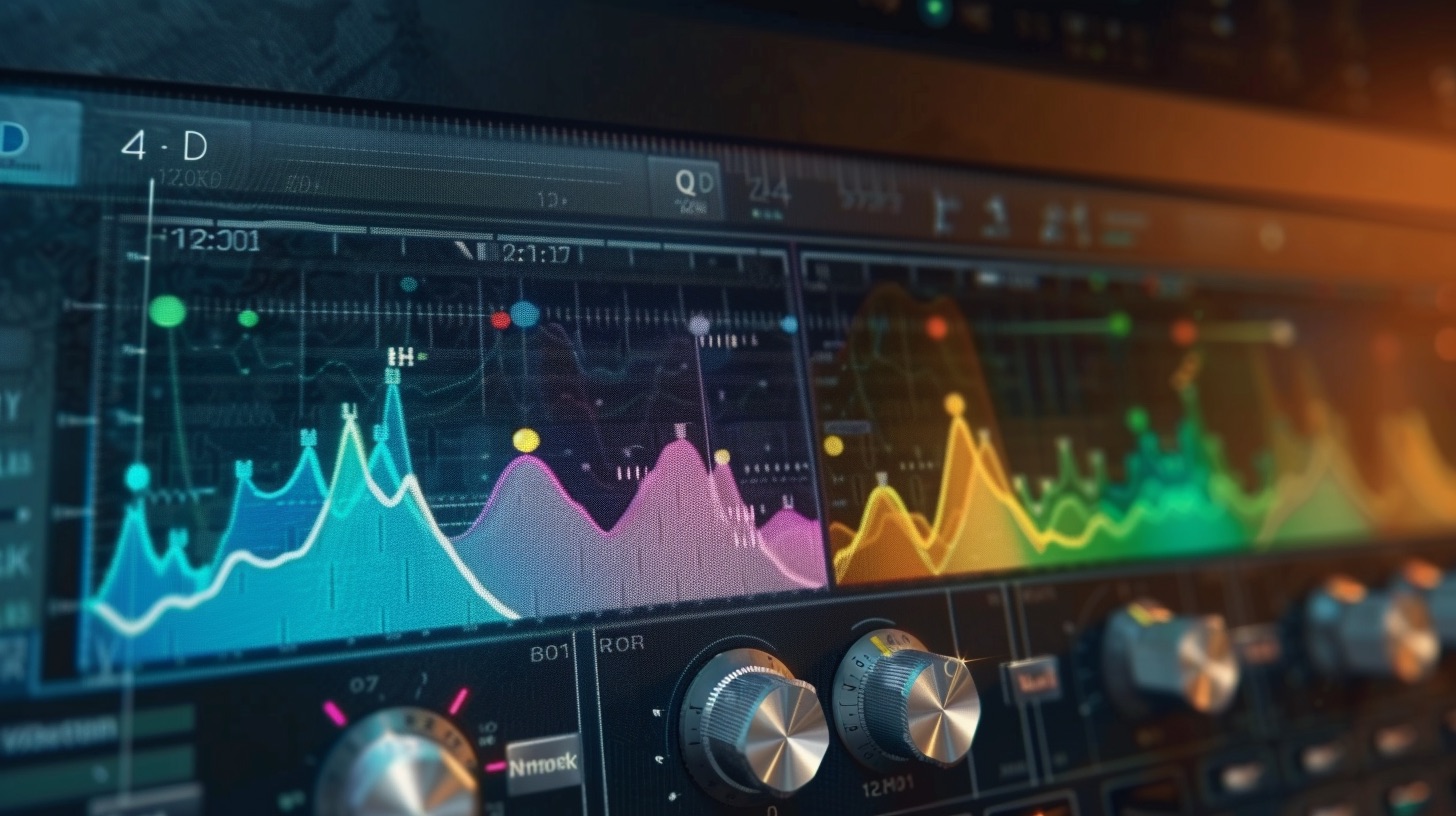
Mixing Allegaeon’s Aggressive Tech-Prog Drums with Dave Otero
Nail The Mix Staff
Let’s be real, the drums in a band like Allegaeon are a whole different beast. They’re not just keeping time; they’re a blistering, technical force of nature. Capturing that power and clarity in a mix is a monumental task. Fortunately, we got to see exactly how a master like Dave Otero handles it.
Forget generic templates. When you’re dealing with drums this complex, you have to make smart, reactive decisions on the fly. We watched Dave work his magic on some tasty tech-prog drums, and he dropped some killer knowledge bombs on EQ, sample blending, and getting that all-important kick drum to slam without turning to mud. It’s a process that requires the same sharp instincts he uses for hybrid MIDI drum mixing. Let’s break down some of his key moves.
Taming Toms with Surgical EQ
Ever solo your toms and hear a weird, resonant “noteness” that just sounds… off? It’s a common problem, especially with fast, complicated fills. Instead of just slapping a generic EQ curve on them, Dave Otero employs a clever two-step process to clean them up without losing their body.
Step 1: Find and Dip the Problem Frequencies
First, he goes hunting. Using a parametric EQ, he finds the very specific frequencies that are causing the trouble. These aren’t broad, musical areas; they’re often narrow, piercing resonant peaks that make the toms sound dissonant or ringy. With a narrow Q setting on his EQ, he surgically dips these “troubled areas” to get them under control.
Step 2: Rebalance with a Macro Boost
Here’s the pro move. After making those surgical cuts, the overall tom can be left sounding a little dull or hollowed out. To counteract this, Dave then applies a very wide, gentle boost across that same general frequency range. This reintroduces the energy and life back into the tom in a macro sense, all while keeping those specific problem spots tamed. It’s a fantastic way to clean up drums while retaining their power. Mastering these kinds of equalization techniques is crucial for a polished drum sound.
When Live Mics Become Support: Blending Snare Samples
In a perfect world, every recorded snare mic would be a flawless representation of the perfect snare tone. In reality, that’s rarely the case. Dave quickly realized that the original snare mics on this track weren’t going to be the primary sound source. Instead of fighting them, he made a pivotal decision: let samples carry the weight and use the live mics for a supportive role.
Reducing “Papery” Bleed and Shaping for Feel
Once he decided the samples would be the star, the job of the live snare mics changed. His goal was no longer to make them sound like a complete snare on their own. Instead, he started EQing them to complement the samples.
This meant pulling down some of the top end. The live mics had some “papery” high-frequency bleed from the cymbals and hi-hats that was clashing with the crack of the samples. By rolling off that top end, he reduced the nasty bleed and shaped the live mics to provide body and the “feel” of the original performance. When blended underneath the samples, you get the best of both worlds: the perfect, consistent punch of the sample and the human groove from the live mics, without any of the sonic downsides. It’s a textbook example of serving the song, not the source, a core principle in mixing drums. To keep everything tight, you’ll often need to apply some smart dynamic control, which is where a solid understanding of an audio compressor comes into play.
Nailing the Kick: The Malo vs. Click Balancing Act
Ah, the eternal kick drum struggle. How do you get enough low-end weight (the “malo” or “thump”) and enough beater attack (the “click”) so it cuts through a wall of guitars? Careful kick drum EQ is the key, and Dave admits, this is one of the hardest things to get right.
A lot of it comes down to knowing your monitoring environment. In his studio, Flatline Audio, he relies on his Barefoot monitors, which have an incredible low-end response. But that creates its own unique challenge.
The Car Check Still Reigns Supreme
Here’s something that should make every home studio producer feel better: Dave Otero still does car checks. Why? Because pro monitors like his Barefoots are so capable of reproducing low frequencies that it can be hard to tell when you have “too much” for a standard consumer system. They just handle it.
His tried-and-true method is to get the mix to a good place and then go crank it in his car. If the kicks start “farting out” or distorting the speakers, he knows he’s pushed the sub-bass too far for the real world. It’s a simple, effective reality check against the pro monitoring environment.
Know When to Turn It Up
While Dave mixes at what he calls “majoritively conservative” levels for most of the process, he has found that to really judge the relationship between the kick and the bass, he has to crank it up for short periods. Pushing the volume helps him feel how the low-end elements are interacting and fighting for space. He doesn’t do it for long, but it’s a critical step to ensure the foundation of the track is solid.
See How It All Comes Together
These techniques are awesome, practical tricks you can start using today. But they’re just small pieces of a much larger puzzle. Seeing how Dave Otero applies an SSL J-style channel strip, when he decides to pull room sound out of the overheads, and why he adjusts the velocity curves on his snare samples is where the real learning happens.
Allegaeon on Nail The Mix
Dave Otero mixes "Roundabout"
Get the Session
With Nail The Mix sessions, you can stop guessing. You get to be a fly on the wall for the entire process. We give you the full, raw multitracks from this monster Allegaeon song and let you watch Dave mix it from the ground up, explaining every single decision he makes along the way. If you’re ready to learn how to mix music beyond presets, this is how you do it. Come see exactly how a top-tier metal mix gets its power by checking out the full Allegaeon session with Dave Otero.
Get a new set of multi-tracks every month from a world-class artist, a livestream with the producer who mixed it, 100+ tutorials, our exclusive plugins and more
Get Started for $1





